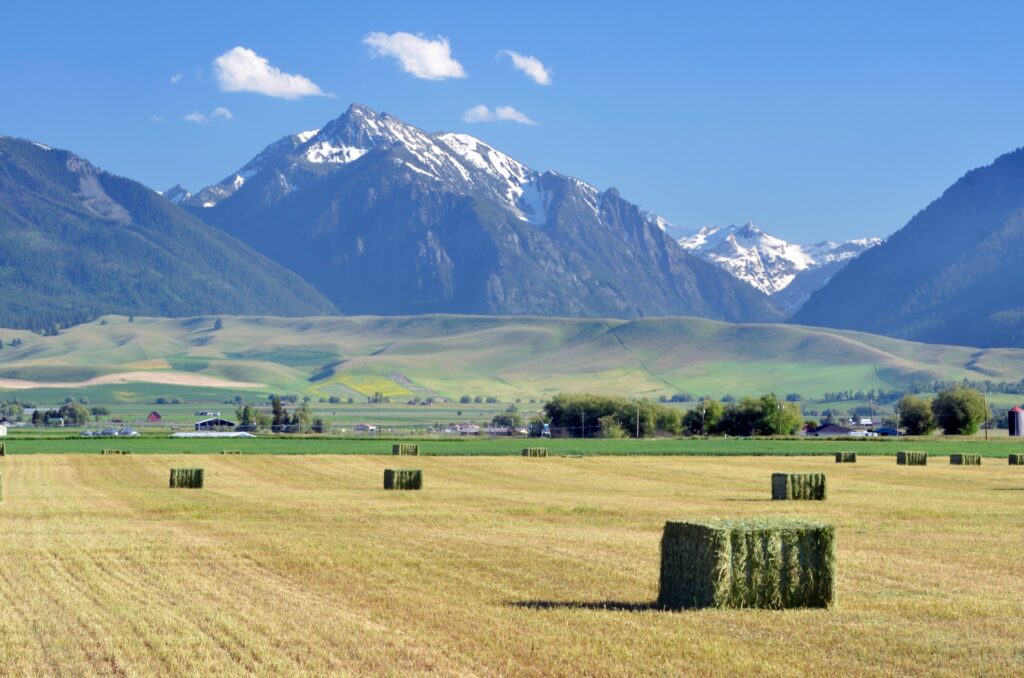Twelve counties in the state have now voted to support efforts to change Oregon’s border with Idaho.
By Julia Shumway, Oregon Capital Chronicle, June 7, 2023
A central Oregon county scheduled an election to test support for becoming part of Idaho on Wednesday morning, less than 24 hours after final results from a May election in an eastern county showed a victory for supporters of the “Greater Idaho” movement.
The razor-thin vote in Wallowa County means that 12 Oregon counties have voted to move toward a long-shot effort to redraw the state’s boundary with Idaho that would turn close to 400,000 Oregonians into Idahoans and give the Gem State control of almost two-thirds of Oregon’s land. The next to vote is Crook County, after the county court voted Wednesday morning to send a question to the May 2024 ballot asking whether county officials should advocate for moving the state border.
None of the measures approved by eastern Oregon voters will actually change the boundary – nor could they. That would take action from both state legislatures and Congress. Instead, voters have directed their county officials to regularly discuss changing state borders or lobby state and federal officials.
But the votes serve as an indication of intense and growing divides between many residents in rural eastern Oregon and those in the state’s population and economic hubs of Portland and the Willamette Valley. Those deep differences have been in stark relief in the state Capitol as Senate Republicans – most of whom represent eastern Oregon – have shut down legislative work for more than a month as part of a quorum-denying walkout intended in part to block Democratic bills on abortion, gender-affirming care and guns.
Matt McCaw, a former high school math teacher and leader of the Greater Idaho movement in Crook County, said the ongoing walkout is an example of a problem his movement is trying to solve.
“They have this massive gridlock, and that gridlock doesn’t need to be there,” he said. “Western Oregon can get a government that will make their communities better, that their constituents want without interference from eastern Oregon, and eastern Oregon can get the same thing.”
Stephen Piggott with the Western States Center, which tracks far-right extremism in the Northwest and Mountain West and promotes marginalized communities, said the Greater Idaho movement and the questions that have shown up on local ballots in most recent election cycles contribute to the divide.
“There’s a lot of division within the country, in general, and Greater Idaho is fanning the flames of that and then adding fuel to the fire,” Piggott said.
He added that proponents of changing the state boundary focused on inflammatory issues including anti-LGBTQ rhetoric and COVID denial. Piggott shared screenshots of ads and online memes posted by supporters, including one comparison of the two states that credited Idaho for “trustworthy elections” and derided Oregon for providing driver’s licenses and health coverage to people living in the country illegally, allowing transgender girls to play in girls’ sports leagues and paying for Medicaid recipients and others who receive health coverage through the state to receive abortions.
A map proposed by Greater Idaho would move Baker, Crook, Gilliam, Grant, Harney, Lake, Malheur, Morrow, Sherman, Umatilla, Union, Wallowa, Wheeler counties and all but a sliver of Jefferson and Klamath counties into Idaho. It also includes a portion of Wasco County – but not The Dalles – and part of Deschutes County, taking Redmond and La Pine but leaving Sisters and the rapidly growing and increasingly liberal city of Bend with Oregon.
Backers last year considered a more ambitious plan to extend the Idaho boundary across southern Oregon to the Pacific Ocean but abandoned their vision of coastal property in Idaho after voters in Douglas and Josephine counties rejected the proposal.
In Wallowa County, the question of changing state borders has been more controversial than in other eastern counties. Wallowa, in the northeast corner of Oregon, is the state’s fifth-smallest with just more than 7,400 residents.
Voters there first rejected the idea of moving state borders in November 2020, and Greater Idaho supporters won the May election with just seven votes. Tuesday was the deadline for a handful of voters whose ballot envelopes were flagged because they were missing signatures or had signatures that didn’t match examples on file to cure, or fix, their ballots, and it wasn’t clear before Tuesday night whether the close election demanded a recount.
Rep. Bobby Levy, an Echo Republican who represents Wallowa County in the state House, declined to comment on her constituents voting for the Greater Idaho movement. Sen. Bill Hansell, R-Athena who represents the county in the Senate, didn’t return a call.
McCaw, a leader of the Greater Idaho movement, described the close vote in Wallowa County as being a symptom of the picturesque county’s appeal to retirees from western Oregon.
“It’s a very popular place for people from the valley to buy second homes or vacation homes or retire to,” he said. “So it’s not typically as conservative as the rest of eastern Oregon to begin with.”
FEATURED IMAGE: Wallowa County voters decided to break away from Oregon and join Idaho. (Courtesy of Rick Vetter)
Oregon Capital Chronicle is part of States Newsroom, a network of news bureaus supported by grants and a coalition of donors as a 501c(3) public charity. Oregon Capital Chronicle maintains editorial independence.



